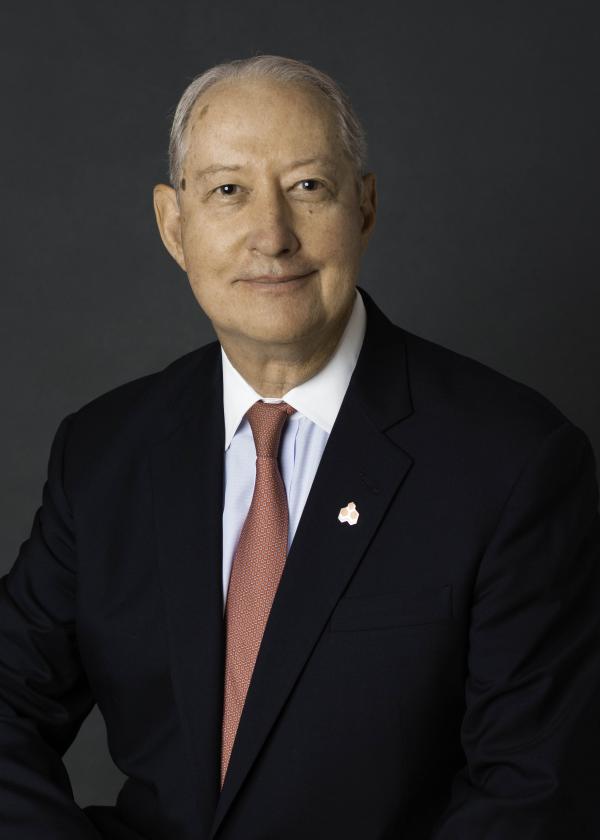By Tony Davidow, CIMA®, president of T. Davidow Consulting.
Watch this short conversation between Tony Davidow, CIMA and Aaron Filbeck, CFA, CAIA, CIPM, FDP, where they discuss the importance of starting with client objectives and how goals-based investing is a superior approach to portfolio management.
A good portfolio is more than a long list of good stocks and bonds. It is a balanced whole, providing the investor with protections and opportunities with respect to a wide range of contingencies.” - Harry Markowitz
Modern Portfolio Theory (MPT) assumes that investors are risk-averse, and that a rational investor will select the optimal portfolio. MPT has inherent limitations: investors are not always rational, and they do not always select the less-risky portfolio. Investors often chase returns, gravitating to a hot manager or asset class, especially during bull markets. Markets are not always efficient, and they are prone to boom-and-bust periods, where emotions shift from euphoria to fear.
Critics point to MPT’s limitations, but many of the alternative asset allocation methodologies have drawbacks as well. The biggest limitation is the robustness and accuracy of the data used in developing your asset allocation. Mean-variance optimization (MVO) models use long-term capital market assumptions, but returns, risks, and correlations are not always stable over the long run. Using only long-term historical averages of the underlying asset classes may be a flawed approach if future results are dramatically different than the long-term historical data.
In fact, that is the challenge that we face today, with most capital market assumptions projecting substantially lower equity returns, fixed-income yields are near generationally low levels, and correlations across most traditional assets are elevated. Wealth advisors need an expanded set of investment options to meet their client’s goals and objectives.
Evolving Asset Allocation
Harry Markowitz introduced us to the value of diversification in building portfolios, but the world has changed a great deal since Markowitz’s seminal work in the 1950s. We need to learn the lessons of history and evolve our approaches to fit the current market environment. We need to expand the number of asset classes to identify opportunities and diversify risk.
As advisors began to educate investors about the benefits of diversification, many adopted the 60/40 allocation as a popular benchmark portfolio. The long-term historical annual average of the S&P 500 has been 10.2 percent, and the long-term annual yield on fixed income has been roughly 4 percent. The equity allocation provided strong returns, the fixed-income allocation provided income, and together investors achieved some degree of diversification because of the investments’ relatively low correlation to one another.
The naive 60/40 portfolio provided attractive returns, income, and diversification, and investors could easily shift their allocations to generate higher returns or to accommodate other needs over time. But what if equity returns and bond yields are lower during the next 10 to 20 years? What if correlations among asset classes remain elevated? How can investors achieve their desired return requirements? Do they need to take on more risk or extend their time horizons?
Advisors should consider broader diversification across their equity and fixed income allocations, including international developed, emerging markets, high-yield bonds, real estate, commodities, and certain types of alternative investments. The broader diversification can help increase return, reducing risk and providing non-correlating returns.
Advisors need a better toolbox with more multi-faceted tools. With traditional returns and income likely well below their historical averages, advisors need to identify alternative sources of returns and income for their clients. They need to evaluate different strategies and structures to meet clients’ needs and objectives. Alternative investments may be valuable tools for advisors in meeting their client’s needs.
With the strong US equity market returns during the bull run, advisors have been slow to incorporate hedge fund strategies in a meaningful way. Some of this is due to the generally lackluster results of many of these strategies, and some is due to the lack of education and conformity in describing what these strategies are designed to do in a diversified portfolio. Most hedge fund strategies are not designed to outperform the S&P 500 in a rising market. Strategies such as equity hedge and event-driven hedge their exposure to the market, relative value is a conservative strategy designed to provide steady incremental returns, and macro and multi-strategy are defensive strategies that earn their stripes in difficult market conditions. Therefore, benchmarking these strategies relative to the S&P 500 are not meaningful.
Private markets (private equity, private credit, and real assets) are garnering a lot of attention lately because of their potential return, income, diversification, and inflation benefits[1]. These once-elusive asset classes are now available to more investors at lower minimums and with better liquidity.
Goals-Based Investing
Goals-based investing has become a mainstream response to the limitations of MPT, incorporating aspects of behavioral finance to solve for investor needs. Goals-based investing is intuitive and easy to explain to investors, and it fits neatly within the consulting process, providing the flexibility to solve for multiple goals simultaneously.
Goals-based investing moves the discussion with clients from outperforming the market to progress relative to their stated goals, and it reinforces a long-term approach to investing. Rather than maximizing returns or minimizing risks, goals-based investing is designed to provide the highest likelihood of achieving a client’s goals over time. While it balances returns and risks, the utility function of goals-based investing is to achieve a desired outcome: capital appreciation, wealth preservation, retirement income, saving for a second home, college funding, or charitable donations.
HNW families often have multiple goals across multiple accounts, advisors should determine the specific desired outcomes and establish obtainable goals for each account. Advisors must consistently reinforce progress relative to client goals in rising and falling markets, as well as the predetermined time horizon to achieve those goals. Advisors might be tempted to focus on strong performance in good times and revert to the goals when things are tough; unfortunately, losing credibility with clients and making it challenging to keep them on course.
[1] Davidow, Anthony, “Private Equity: Innovation and Evolution”, Investments & Wealth Monitor, November-December, 2019
About the Author:
Tony Davidow, CIMA®, is president of T. Davidow Consulting, an independent advisory firm focused on developing and delivering content on the challenges facing the wealth management industry.

Davidow leverages his diverse experiences to deliver research and analysis on advanced asset allocation, the role and use of alternative investments, factor investing, and ESG among others. He currently serves as the Chair of the Editorial Advisory Board for the Investments & Wealth Monitor.
Previously, Davidow held senior leadership roles at Morgan Stanley, Charles Schwab, Guggenheim Investments, and Kidder Peabody among others. In 2017, Davidow received the Stephen L. Kessler writing award, and in 2015, he received Honorable Distinction. In 2020, Davidow was recognized by the Investments and Wealth Institute, with the prestigious Wealth Management Impact Award, which honors individuals who have contributed exceptional advancements in the field of Private Wealth Management. He is the author of the upcoming book, “Goals-Based Investing: A Visionary Framework for Wealth Management” (McGraw-Hill 2021).




